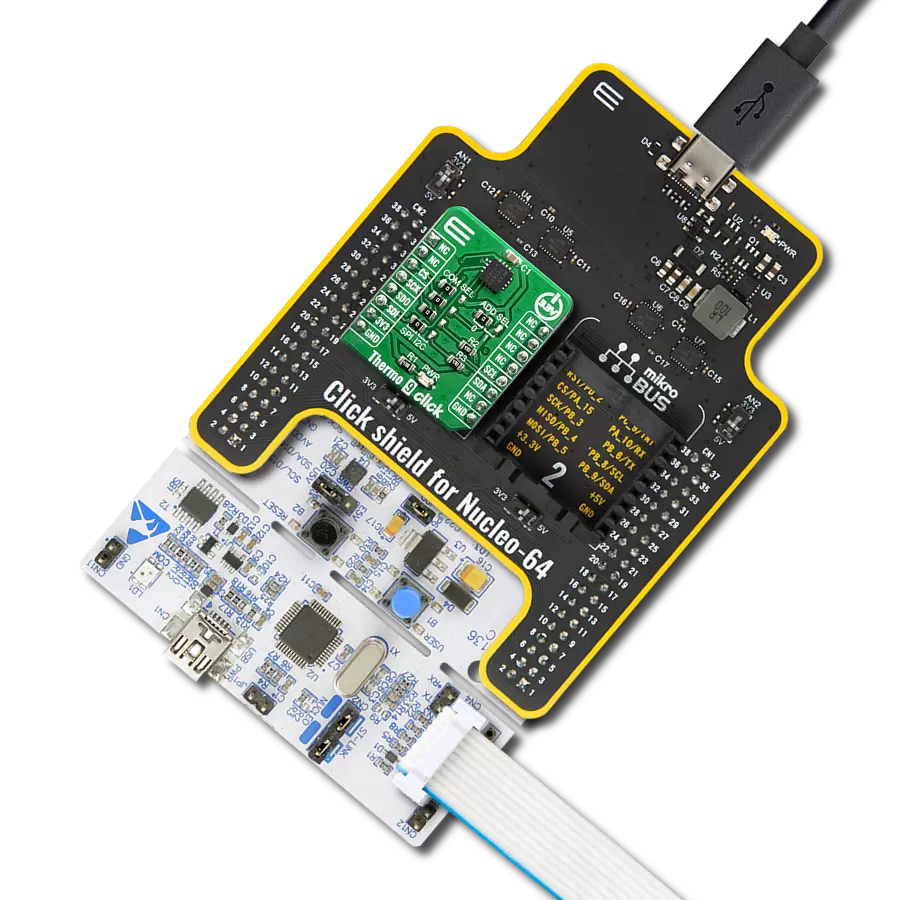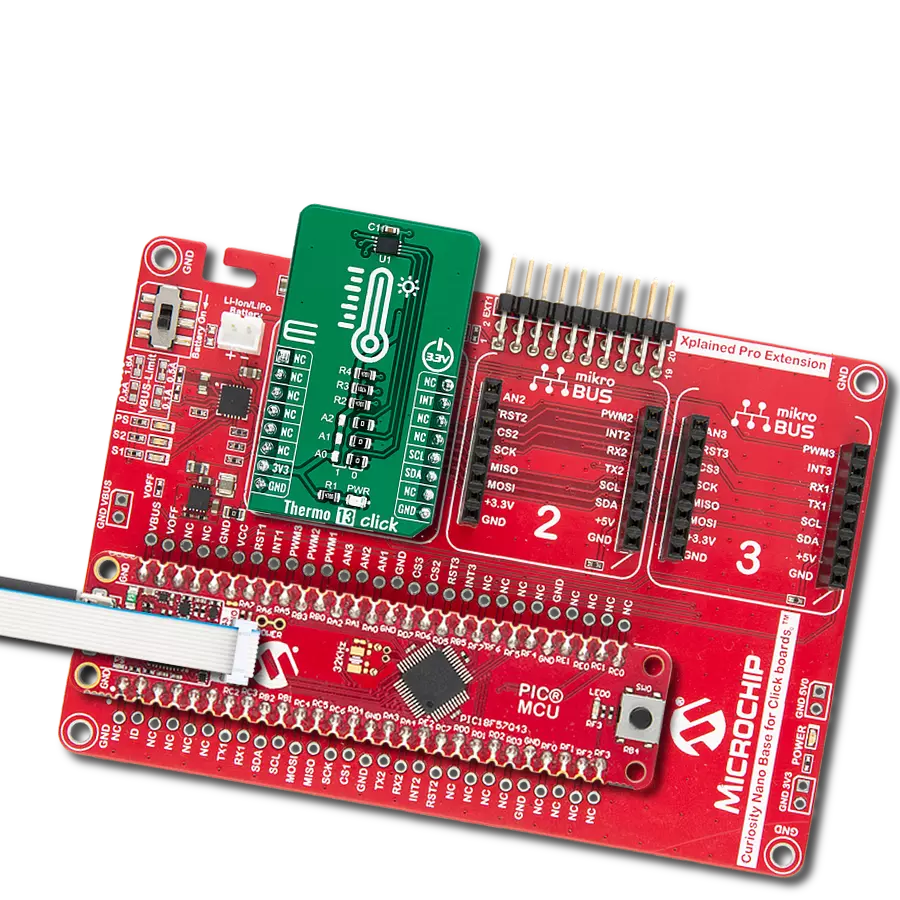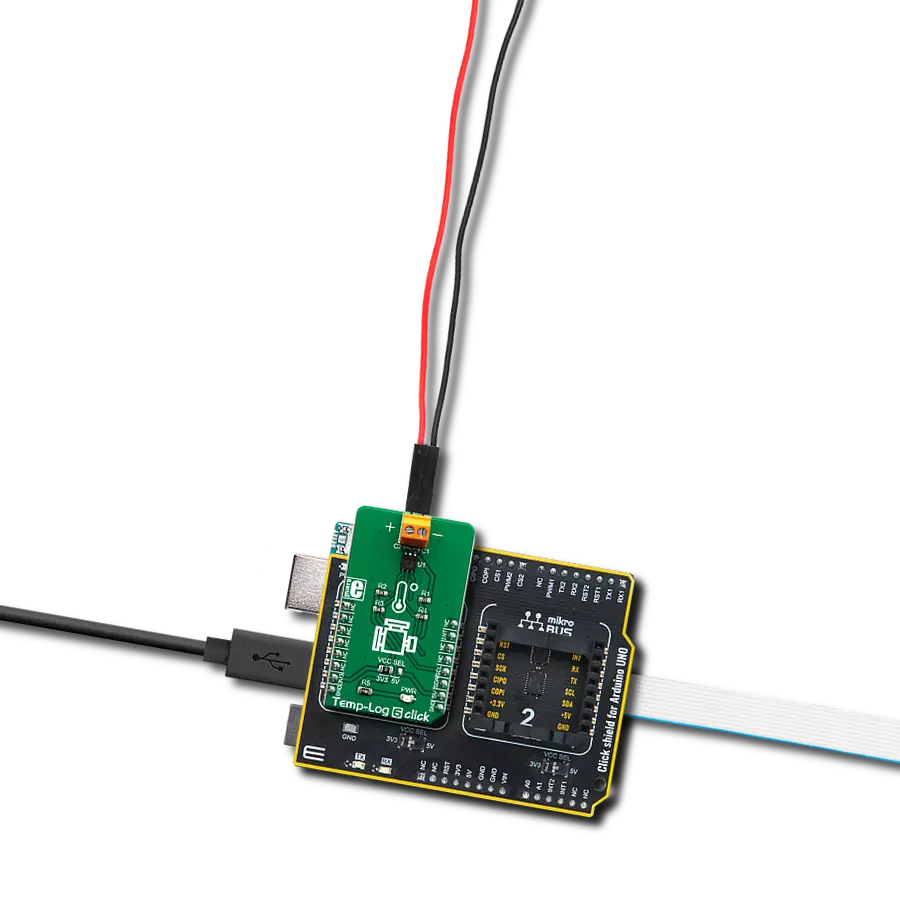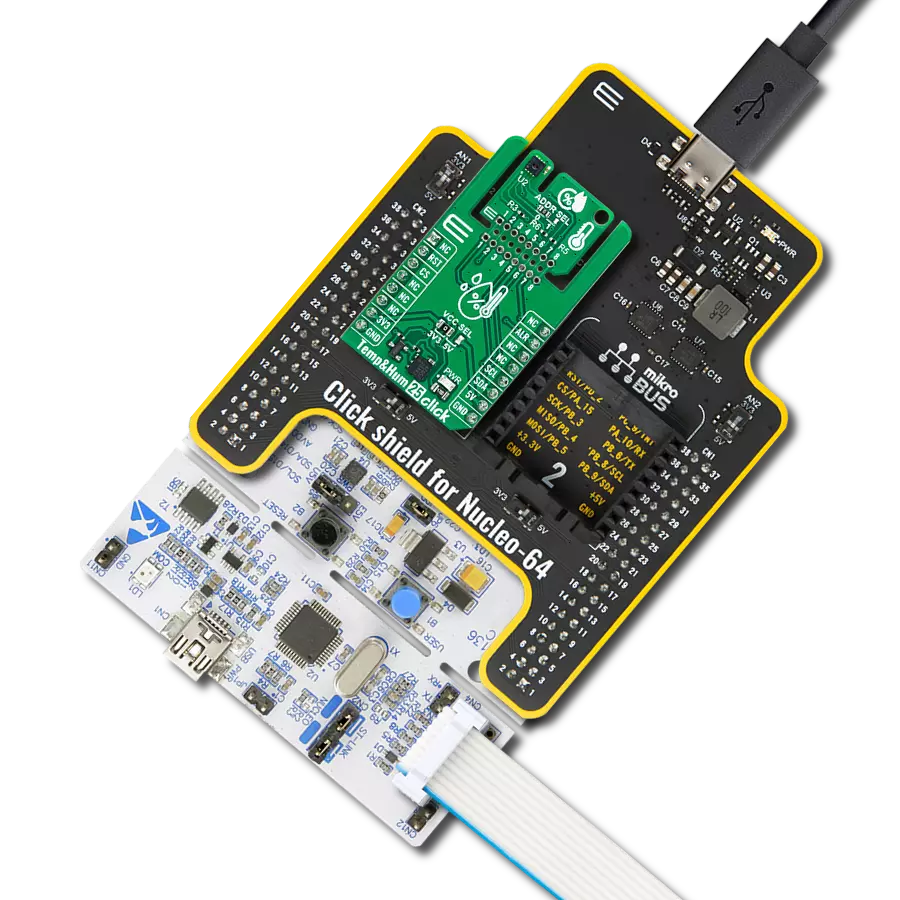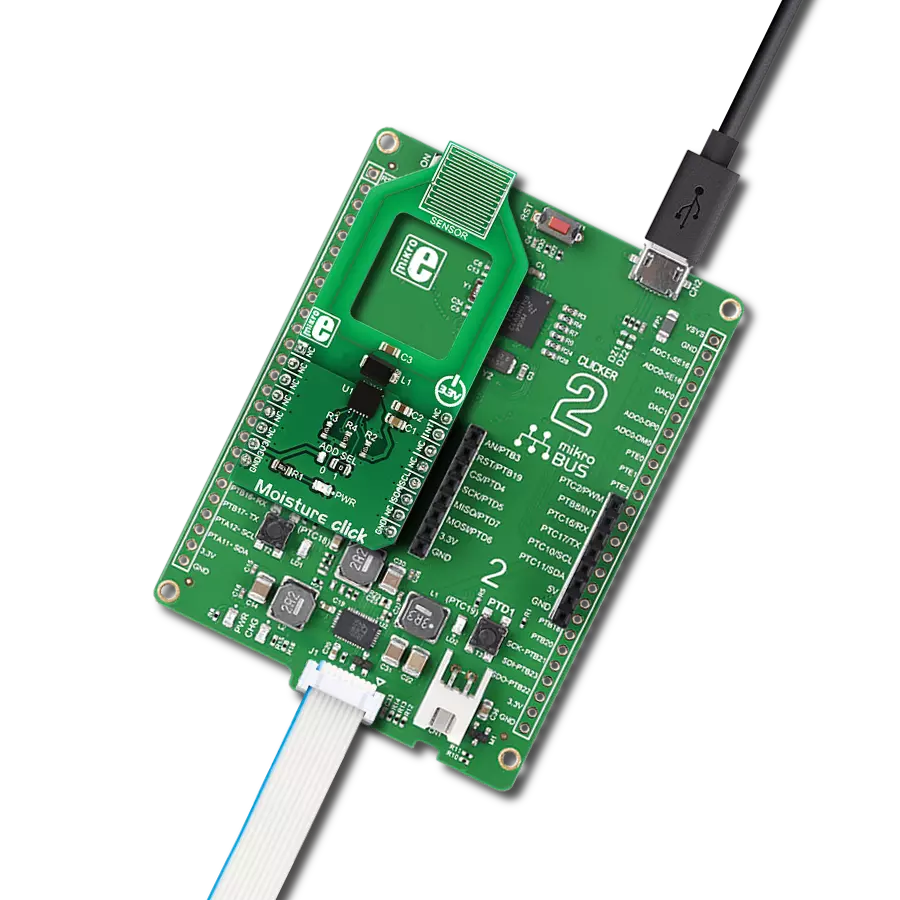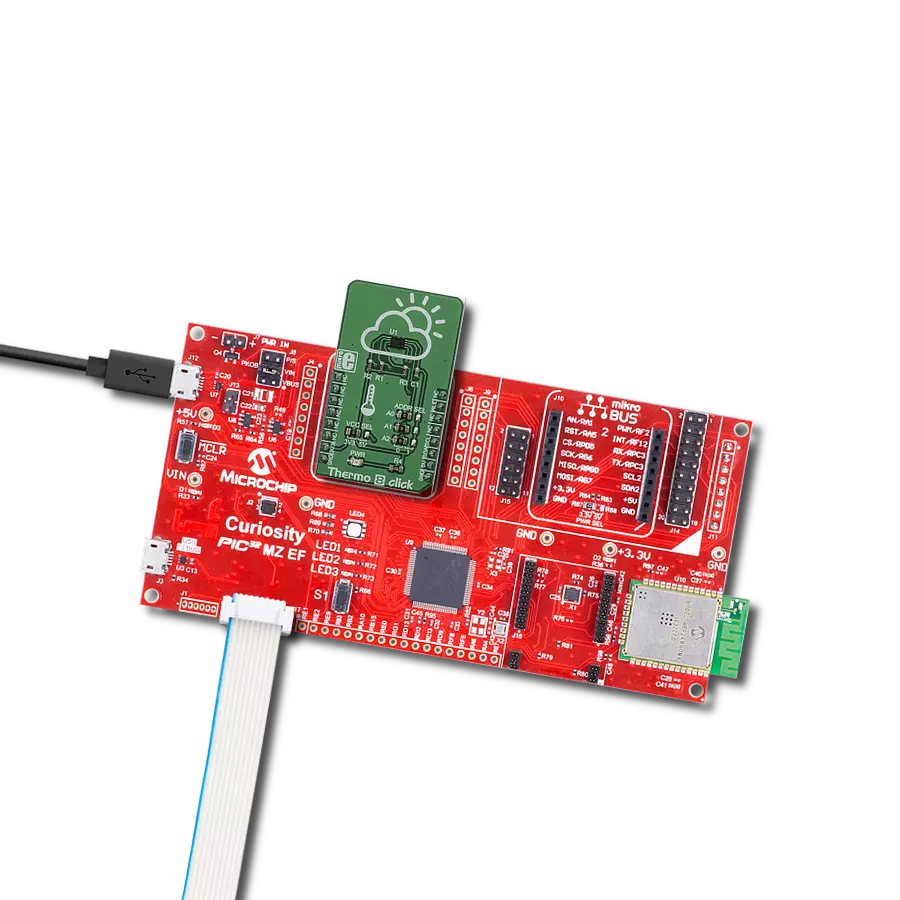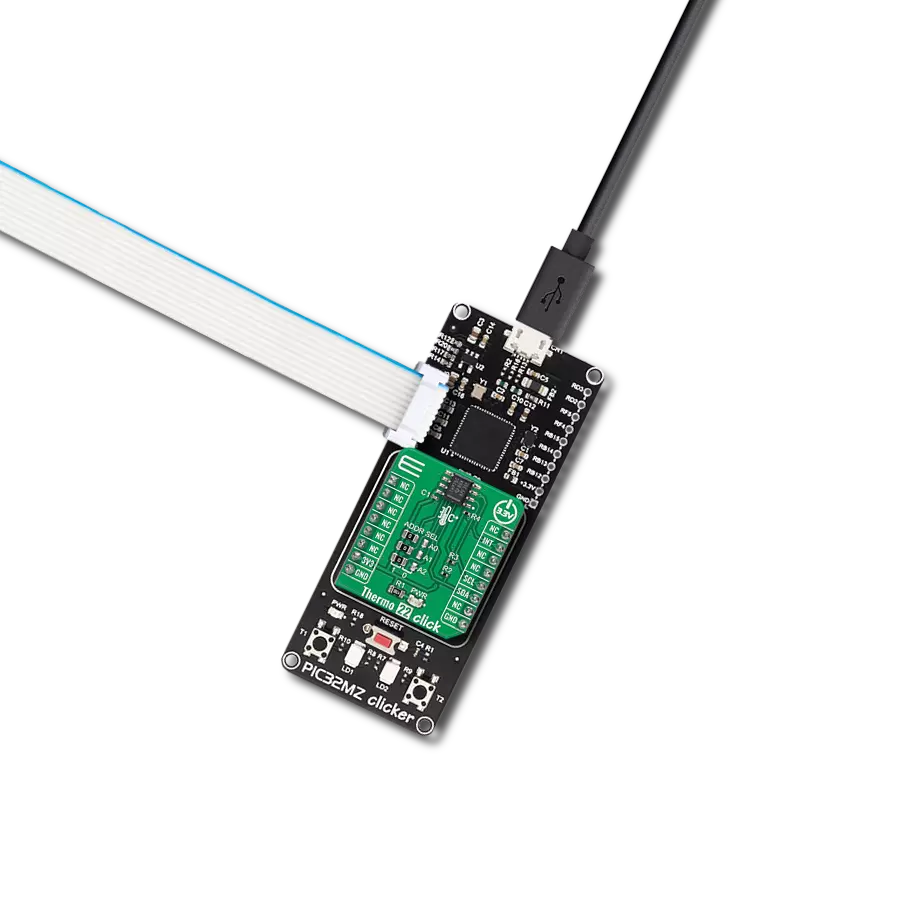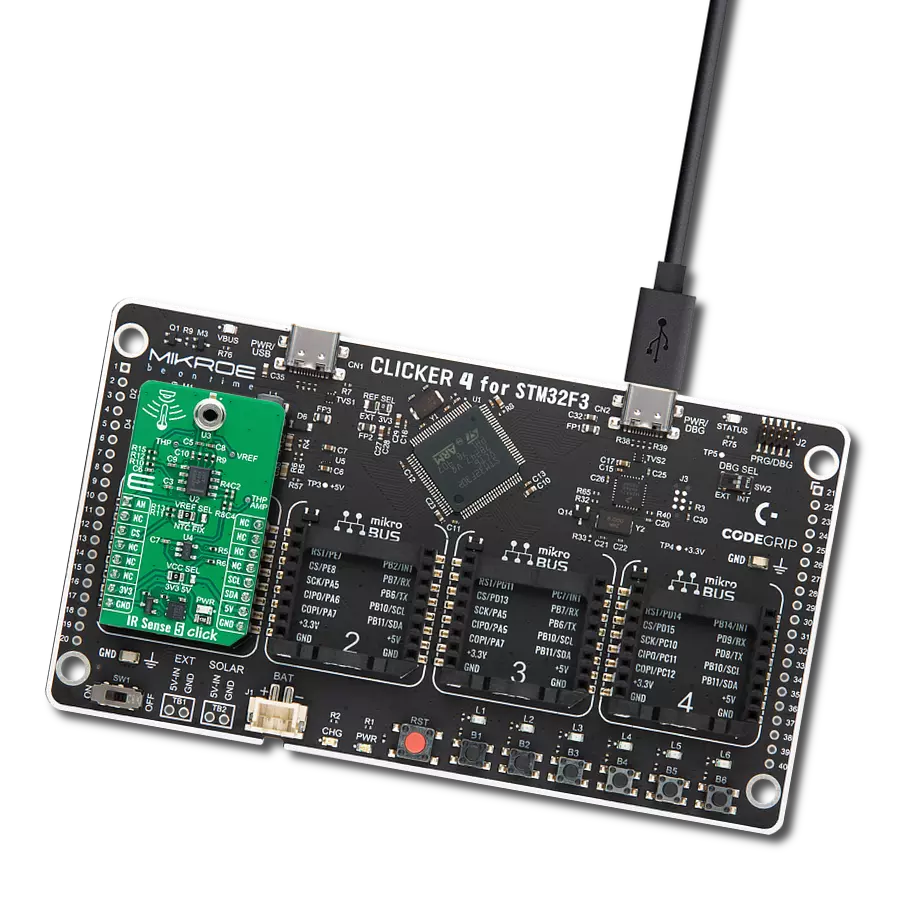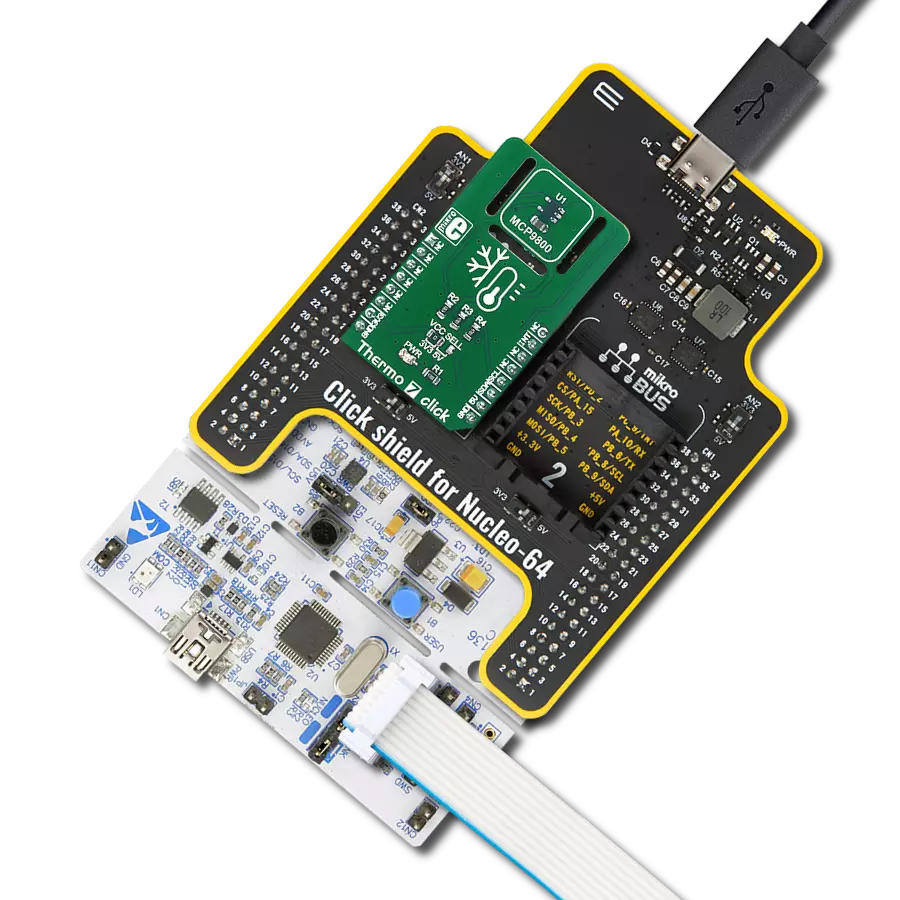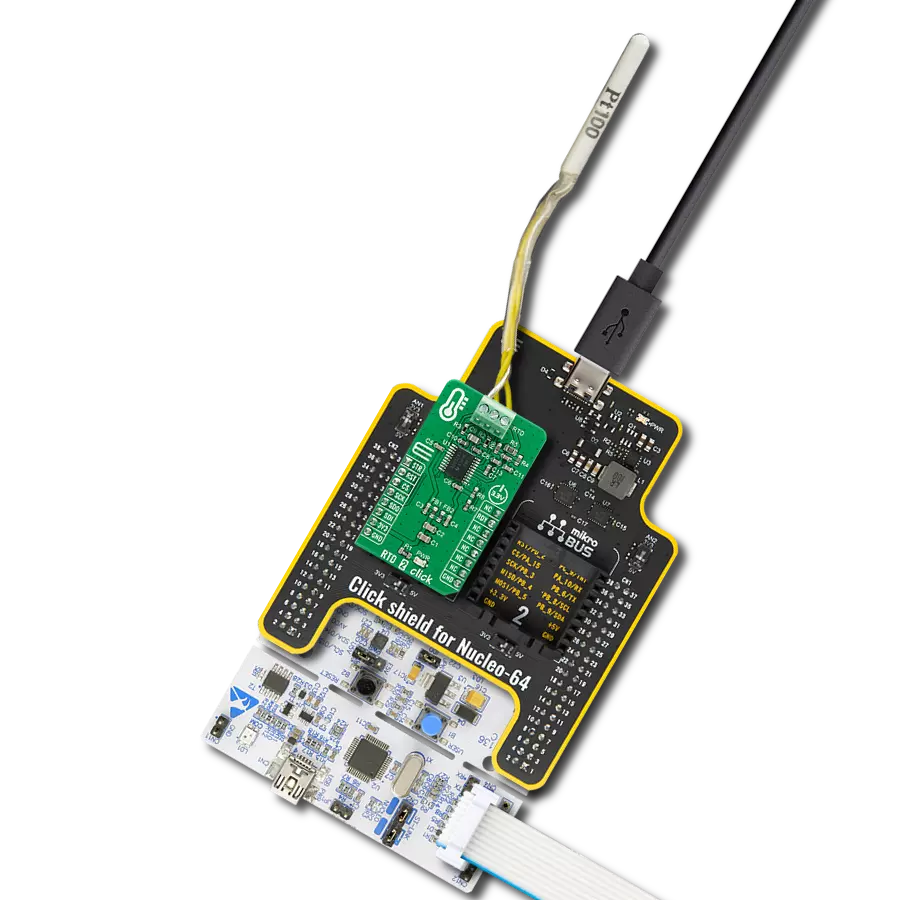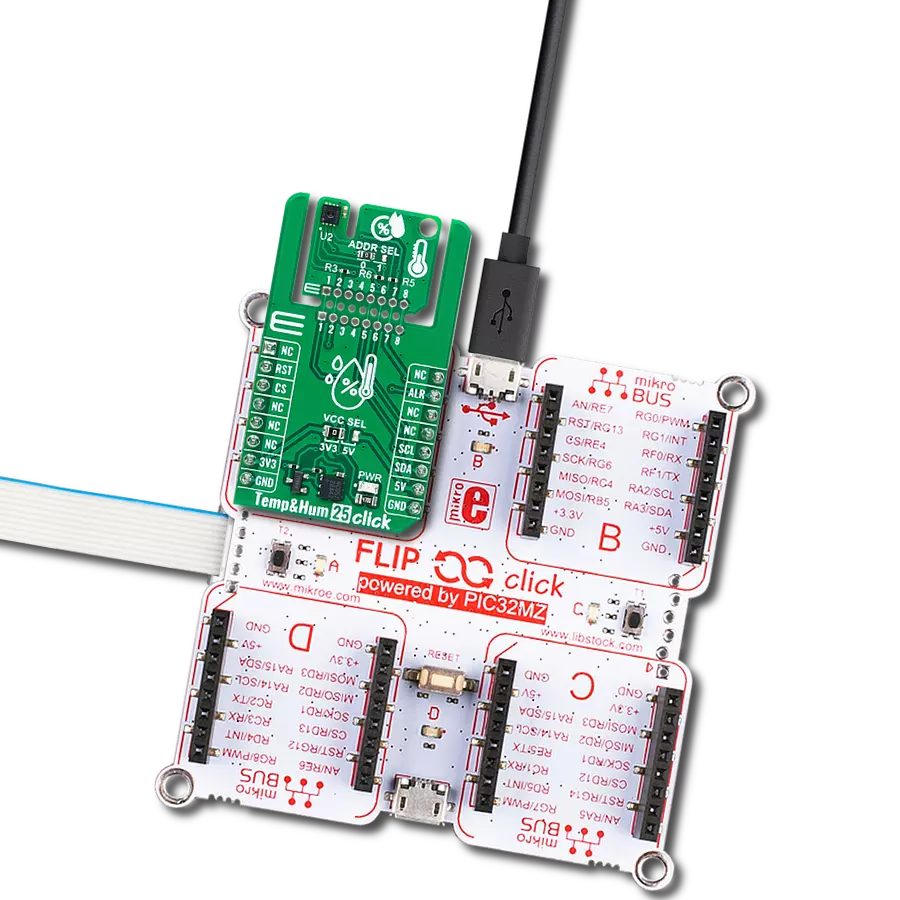Our thermostat goes beyond comfort – it safeguards your home by providing overtemperature alarm and shutdown capabilities for added peace of mind.
A
A
Hardware Overview
How does it work?
Thermostat Click is based on the MAX7502, a digital temperature sensor and thermal watchdog with bus lockup protection from Analog Devices. The MAX7502 measures temperature in a range of -25 up to 100°C, within the accuracy of ±1.5°C, and provides an overtemperature alarm/interrupt/shutdown output. Temperature measurements are converted to digital form using a high-precision sigma-delta ADC. Besides the temperature readings, you can set the overtemperature alarm threshold and configure other characteristics. The Temperature Click uses the overtemperature shutdown output (OS) to control the G6D relay, taking into account the set threshold. The ON LED is a visual presentation of the state of the relay. Omron’s G6D PCB relay is
very durable and allows over 300.000 operations with a 2A load at 250VAC or 30VDC. It is an SPST relay, in which the coil is powered by a 5V power rail of the mikroBUS™ socket. To control the output of the MAX7502, thus the relay itself, as a switch, the Thermostat Click uses the SN74LVC1G126, a single bus buffer gate with 3-state output from Texas Instruments. With a simple logic state, you can turn on or off the output pin of the temperature sensor, no matter the set threshold. This way, the relay can be permanently disconnected from the sensor IC output. A feature like this can be useful when the sensor IC is only used as a measuring device or if the thermostat needs to be temporarily disabled. Thermostat Click uses a standard 2-Wire I2C
interface to communicate with the host MCU with a clock frequency of up to 400KHz. The sensor employs four standard I2C protocols: write byte, read byte, send byte, and receive byte. You can set the I2C address over the ADDR SEL, with 0 set by default. The temperature sensor can be reset over the RST pin, while the TE pin can be used to enable the thermostat circuitry. This Click board™ can operate with either 3.3V or 5V logic voltage levels selected via the DATA LEVEL jumper. This way, both 3.3V and 5V capable MCUs can use the communication lines properly. Also, this Click board™ comes equipped with a library containing easy-to-use functions and an example code that can be used as a reference for further development.
Features overview
Development board
EasyPIC v7a is the seventh generation of PIC development boards specially designed for the needs of rapid development of embedded applications. It supports a wide range of 8-bit PIC microcontrollers from Microchip and has a broad set of unique functions, such as the first-ever embedded debugger/programmer over USB-C. The development board is well organized and designed so that the end-user has all the necessary elements in one place, such as switches, buttons, indicators, connectors, and others. With four different connectors for each port, EasyPIC v7a allows you to connect accessory boards, sensors, and custom electronics more efficiently than ever. Each part of the EasyPIC v7a development board
contains the components necessary for the most efficient operation of the same board. In addition to the advanced integrated CODEGRIP programmer/debugger module, which offers many valuable programming/debugging options and seamless integration with the Mikroe software environment, the board also includes a clean and regulated power supply module for the development board. It can use various external power sources, including an external 12V power supply, 7-23V AC or 9-32V DC via DC connector/screw terminals, and a power source via the USB Type-C (USB-C) connector. Communication options such as USB-UART and RS-232 are also included, alongside the well-
established mikroBUS™ standard, three display options (7-segment, graphical, and character-based LCD), and several different DIP sockets. These sockets cover a wide range of 8-bit PIC MCUs, from PIC10F, PIC12F, PIC16F, PIC16Enh, PIC18F, PIC18FJ, and PIC18FK families. EasyPIC v7a is an integral part of the Mikroe ecosystem for rapid development. Natively supported by Mikroe software tools, it covers many aspects of prototyping and development thanks to a considerable number of different Click boards™ (over a thousand boards), the number of which is growing every day.
Microcontroller Overview
MCU Card / MCU

Architecture
PIC
MCU Memory (KB)
24
Silicon Vendor
Microchip
Pin count
40
RAM (Bytes)
2048
Used MCU Pins
mikroBUS™ mapper
Take a closer look
Click board™ Schematic

Step by step
Project assembly
Software Support
Library Description
This library contains API for Thermostat Click driver.
Key functions:
thermostat_read_data- Generic read 16-bit data function.thermostat_get_temperature- Get temperature in degrees Celsius.thermostat_set_configuration- Set configuration function.
Open Source
Code example
The complete application code and a ready-to-use project are available through the NECTO Studio Package Manager for direct installation in the NECTO Studio. The application code can also be found on the MIKROE GitHub account.
/*!
* \file
* \brief Thermostat Click example
*
* # Description
* This application regulates value of temperature.
*
* The demo application is composed of two sections :
*
* ## Application Init
* Initialization driver enable's - I2C, soft reset sesnor, set default configuration and start write log.
*
* ## Application Task
* This is a example which demonstrates the use of Thermostat Click board.
*
*
* \author MikroE Team
*
*/
// ------------------------------------------------------------------- INCLUDES
#include "board.h"
#include "log.h"
#include "thermostat.h"
static thermostat_t thermostat;
static log_t logger;
void application_init ( void )
{
log_cfg_t log_cfg;
thermostat_cfg_t cfg;
/**
* Logger initialization.
* Default baud rate: 115200
* Default log level: LOG_LEVEL_DEBUG
* @note If USB_UART_RX and USB_UART_TX
* are defined as HAL_PIN_NC, you will
* need to define them manually for log to work.
* See @b LOG_MAP_USB_UART macro definition for detailed explanation.
*/
LOG_MAP_USB_UART( log_cfg );
log_init( &logger, &log_cfg );
log_info( &logger, "---- Application Init ----" );
// Click initialization.
thermostat_cfg_setup( &cfg );
THERMOSTAT_MAP_MIKROBUS( cfg, MIKROBUS_1 );
thermostat_init( &thermostat, &cfg );
thermostat_soft_reset( &thermostat );
Delay_ms ( 100 );
log_printf( &logger, " Configuration \r\n");
thermostat_set_configuration( &thermostat, THERMOSTAT_DEFAULT_CONFIG );
Delay_ms ( 100 );
log_printf( &logger, "----------------------\r\n" );
}
void application_task ( void )
{
float temperature;
float limit_max = 25.0;
float limit_min = 15.0;
temperature = thermostat_get_temperature( &thermostat );
log_printf( &logger, " Temperature : %.2f \r\n", temperature );
if ( ( temperature < limit_max ) && ( temperature > limit_min ) )
{
thermostat_switch_on( &thermostat );
}
else
{
thermostat_switch_off( &thermostat );
log_printf( &logger, "----------------------\r\n" );
}
Delay_ms ( 1000 );
Delay_ms ( 1000 );
}
int main ( void )
{
/* Do not remove this line or clock might not be set correctly. */
#ifdef PREINIT_SUPPORTED
preinit();
#endif
application_init( );
for ( ; ; )
{
application_task( );
}
return 0;
}
// ------------------------------------------------------------------------ END
Additional Support
Resources
Category:Temperature & humidity





















